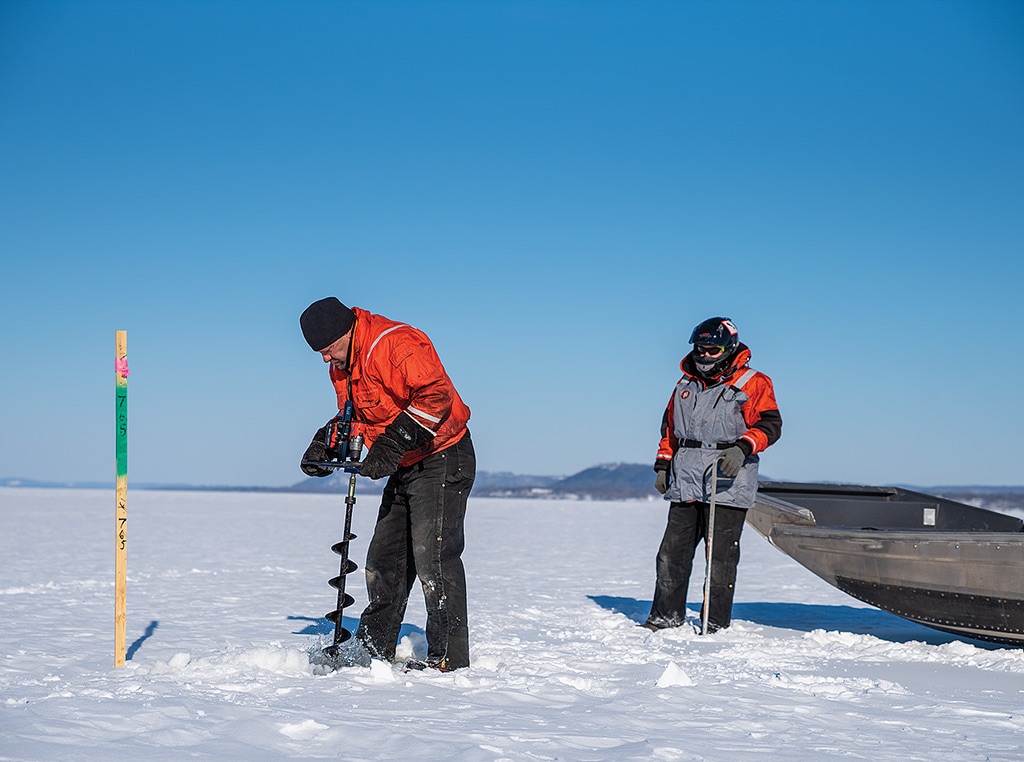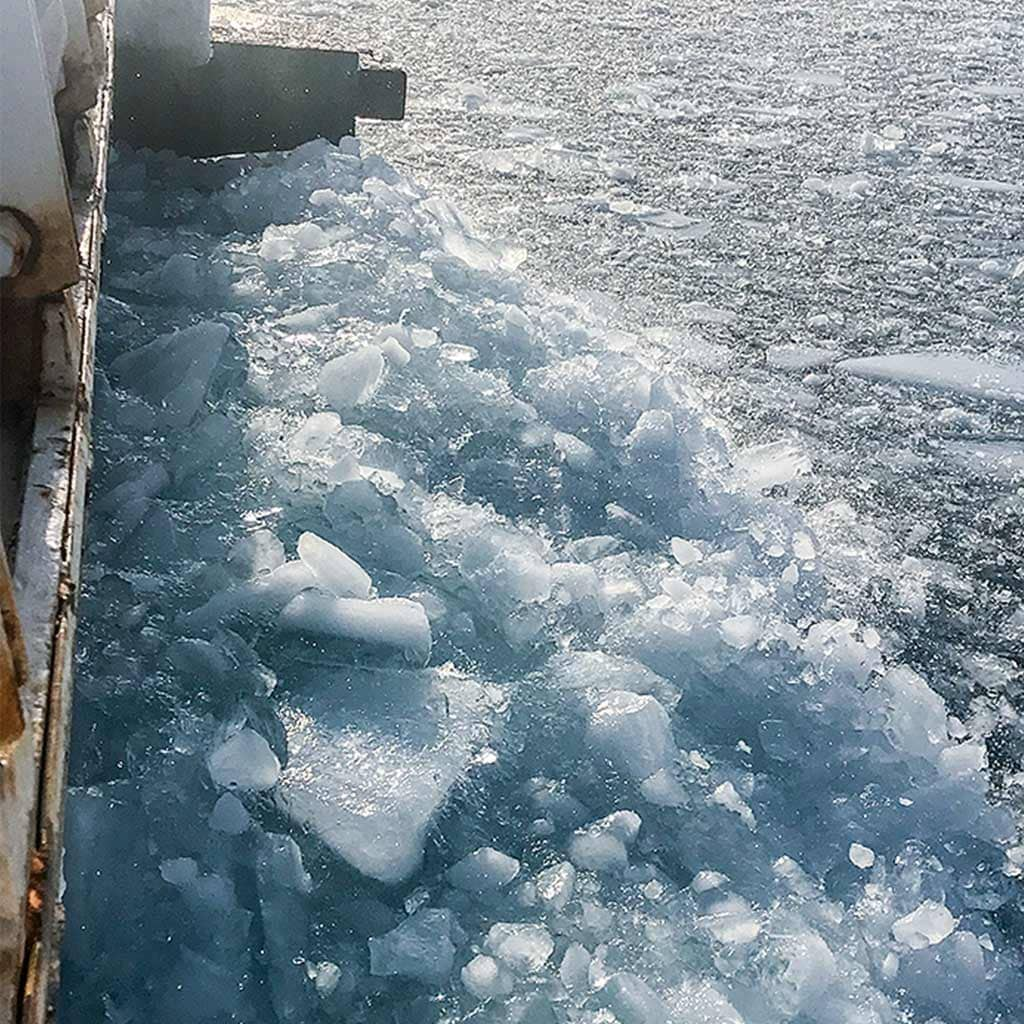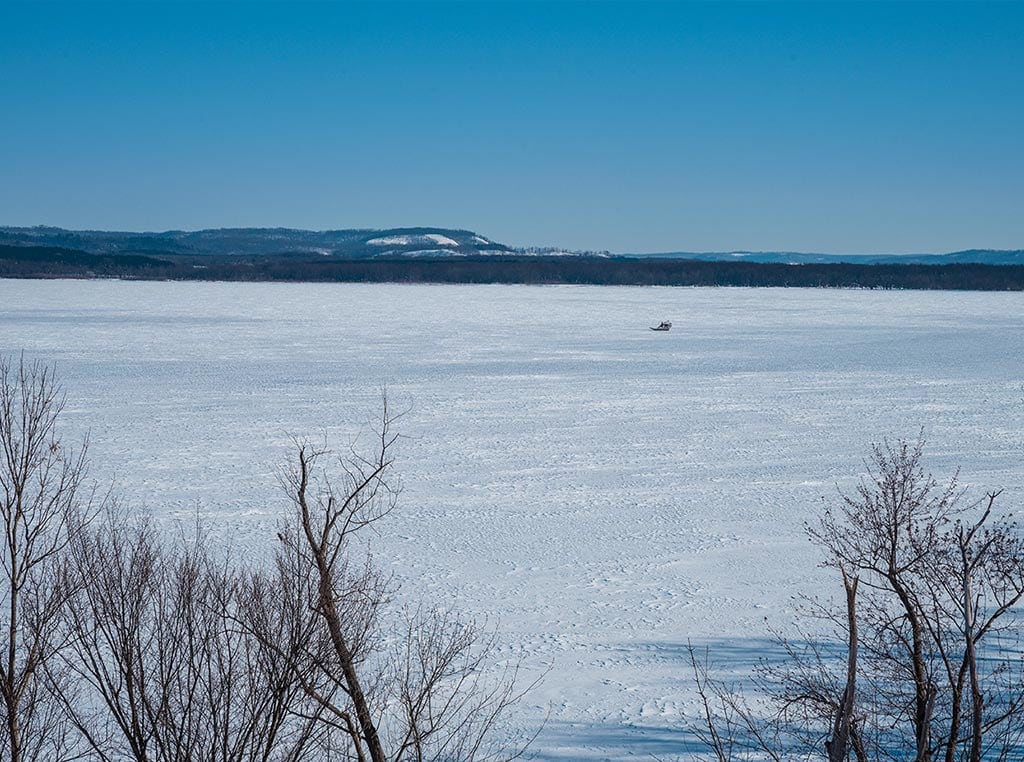Specialty/Niche January 01, 2023
Ice on the Mississippi
.
Measuring when spring will arrive.
When you think of the U.S. Army Corps of Engineers in relation to agriculture, most of you probably think of the people fighting a big, upstream battle in the supply chain: the folks duct taping the locks and dams together (not literally...yet) to keep your harvest and inputs flowing back and forth.
There is one team at the top of the Mississippi River doing a little bit more on some of the coldest days of the year.
The ice survey technicians in the St. Paul District have the crucial role of measuring the ice thickness of Lake Pepin—a wide stretch of the river with particularly slow current about 60 miles southeast of St. Paul—between Lock and Dams 3 and 4.
They zip up their parkas, hop in an airboat, and hover onto the frozen channel weekly from mid-February until the ice opens.
"The only thing that really stops us is the wind, anything more than a 25-mph wind is too much for the airboat," says Al VanGuilder, who has been helping conduct the ice survey since 2003. "The towing industry relies on our measurements to know when they can resume navigation. They don't like to bust through Lake Pepin when there's more than 12 inches of blue ice because it can damage the barges."
It all depends. Just as so many elements impact how your crops grow, no two inches of river ice form or melt the same.
"There's a lot that actually goes into it because you could have a bright, sunny day and no wind. Or you could have a cloudy day and it be very windy; if it's a little bit warmer, the ice will disappear faster," he explains.
This is after many factors contribute to the density and thickness of the ice as it forms. If it snows a lot early in the winter, the snow acts as an insulator and the ice may not be very thick. But there could be a lot of ice without any air bubbles (known as blue or clear ice) in a mild winter with little snowfall.
"The river is going to do what it does, you know. All we can do is monitor it," VanGuilder says with his northern accent.
The average day the 20-mile stretch of river at Lake Pepin opens is March 15, but there is no clear trend line.
The Corps reports the earliest has been March 1 in 2017, which was similar to 1983, 1984, and 2000. But the latest was just the following year—April 10, 2018.
2018 was also the year VanGuilder got his first call directly from a farmer. "That year there had been 30 inches of ice in places (double the norm), and a farmer from Wisconsin called to ask me when the river would be open. He was concerned he wouldn't get his fertilizer in time."
Above. Bill Chelmowski augers into Lake Pepin's ice on March 6, 2019, as Dan DeVaney prepares to measure the thickness at one of 22 mile markers. The ice averaged 16 inches that day, and the section of the Mississippi River was open for traffic two and half weeks later, signaling spring had arrived in the northern Midwest.
The rest of the year. The ice survey team does not measure at the beginning of the winter to determine when shipping will stop.
"Typically, the end of navigation is the first week in December. Our repair crews need ample time to fix the locks and dams—an old system—and make it suitable for the upcoming navigation season. Whether there is ice or not," he says, "the towing industry knows early December is the end of navigation."
The hydrographic survey crew, based in Fountain City, Wisc., is on the river daily all year, though, because they maintain all the channels and harbors in their region.
"The things we do make a difference to really the entire nation because so many commodities come up and down the river," VanGuilder says with a sense of accomplishment.
"We're responsible for keeping it open. We are the team responsible for finding the shallow areas of the river each and every year that need to be dredged," he adds. "If we didn't find those, towboats would not be able to pass through the Upper Mississippi River up into Minnesota and Wisconsin." ‡
Read More

AGRICULTURE, SUSTAINABILITY
Dodging Potholes
Managing soil health helps offset weather and inputs.

AGRICULTURE, SUSTAINABILITY
The Power of Pre
Clean soybean fields depend on a solid residual herbicide program.




